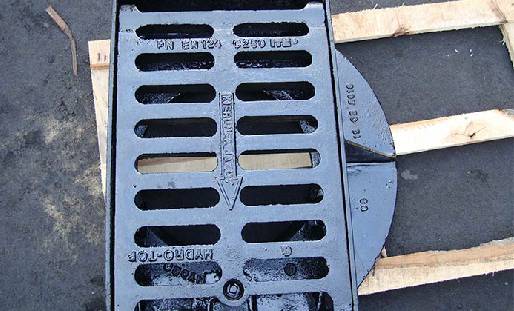The custom aluminum heat sink supplier introduces you to the heat treatment of ductile iron.
One. annealing
Purpose: Generally to obtain ferrite matrix, improve its plasticity and toughness, improve machinability, and eliminate internal stress in casting.
1.High-temperature annealing: the high-temperature annealing process is to heat ductile iron parts above the eutectoid temperature range, that is, 900-950℃, holding for 2-4 hours, so that the casting occurs the first stage of graphitization, and then slowly with the furnace cooling to 600℃, so that the casting occurs in the middle and second stage of graphitization, and then out of the air cooling.
2. Low-temperature annealing: The low-temperature annealing process is to heat the casting to a temperature near the eutectoid temperature range, that is, 720-760 ° C, and hold it for 2-8 hours to make the second-stage graphitization of the casting, and then slowly cool to 600 ° C with the furnace, and then air-cooled.

Ductile Iron Parts
Two. Normalizing
Objective: To make the mixed structure of the matrix in the as-cast state into a pearlite matrix, thereby improving its strength and abrasion resistance.
1. High temperature normalizing: heating the casting above the eutectoid temperature range, generally 880-920 ° C, holding for 1-3 hours to austenitize the matrix structure, and then cooling it out of the oven to make it within the eutectoid temperature range due to Fast cooling to obtain a pearlite matrix.
2. Low temperature normalizing: heating the casting to the eutectoid temperature range, that is, 840-860 ° C, holding it for 1-4 hours, austenitizing the matrix structure, and then cooling it out of the oven. Improved the toughness and plasticity of the casting, but the strength is lower.
three. Although the isothermally quenched ductile iron is used for normalizing, although it is widely used when the shape of the casting is complex and high comprehensive mechanical properties are required, the normalizing treatment is difficult to meet the technical requirements, and isothermal quenching is often used.
The process is to heat the casting to 860-920 ° C, hold it for a certain period of time (about double that of steel), and then quickly place it in an isothermal salt bath at a temperature of 250-350 ° C for an isothermal treatment for half an hour to an hour and a half Then remove the air cooling. four. Tempering and tempering For castings with complex stresses, large cross-section sizes, and high requirements for comprehensive mechanical properties, if normalizing or isothermal quenching can no longer meet the above requirements, quenching and tempering are often used (quenching + high-temperature tempering).
The quenching time and holding time of the quenching and tempering treatment is basically the same as those of the isothermal quenching, that is, the heating temperature is 860-920 ° C. In order to avoid cracking during quenching, oil cooling is generally used except for castings with simple shapes. After quenching, the structure is fine flaky martensite and spherical graphite. It is then reheated to 550-600 ° C and tempered for 2-6 hours.
Ductile iron can be subjected to a variety of heat treatments such as QT400 can be annealed, QT700 can be normalized and tempered, but before induction heating surface quenching, it is best to first normalize.
Previous: Wecome to BEISAI
Copyright:@2020-2021
Comments Please sign in or sign up to post.
0
0 of 500 characters used